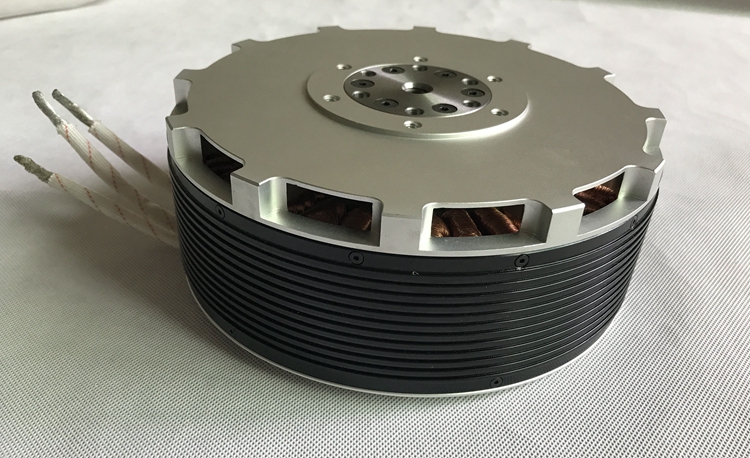Residential Lithium Energy Storage System 10.24kwh
Polinovel's Residential Lithium Energy Storage System is one-stop hybrid system, which combines with Lifepo4 batery, MPPT solar charger inverter, grid charger and smart control BMS. The system can storage energy to power household appliances in the meantime feed extra power into utility to cut the electricity bill. Through cloud platform or APP, user can easy monitor the system working status. This smart system is your ideal choice for home.
Residential Lithium Energy Storage System has more advantages:
Delicated appearance design
WiFi communication
Support solar and utility dual charging method
Grid tied system can selling electricity to public utility
Built-in lithium battery provide longer life
Smart BMS internal with higher safe performance
Integrated system compatible with AC loads
MPPT charger and inverter efficiency is higher than 90%
Completely green energy conservation and environmental friendly
Battery Specification
Nominal Voltage
51.2V
Nominal Capacity
200Ah
Nominal Energy
10.24KWh
Chemistry
LiFePO4
Operation Voltage Range
46.5~58.4V
Operation Temperature Range
0~45℃
Allowed Max Charging Power
2KW
Allowed Max Constant Charge Current
50A
Allowed Max Discharge Power
5KW
Allowed Max Constant Discharge Current
150A (>0.5h)
Cycle Life (DOD 100%)
≥2000cycle
Battery Module Size (LxWxH)
40x312x200 (±2) mm
Battery Module Weight
30±2Kg
Self-Discharge Rate
Residual capacity: ≤3%/month; ≤15%/year
Reversible capacity: ≤1.5%/month; ≤8%/year
Storage Temperature & Humidity Range
Less than 1 month: -20~35℃, 45%~75%RH
More than 1 month: -10~30℃, 45%RH~75%RH
PV Input (DC)
Nominal Input Power
4KW
Max Input Power
5KW
Input Voltage Range
125~500Vdc
Min Working Voltage
100Vdc/150Vdc
MPPT Voltage Range
150~450Vdc
Full Load MPPT Voltage Range
250~450Vdc
MPPT Track
2
Input Terminal
1
Max Charging Current
50A
MPPT Precision
>99%
AC Input (AC)
Nominal Grid Voltage
170~280Vac
Nominal Frequency
50/60Hz
Max Input Current
23A
Max Input Power
5KW
AC Output (AC)
Nominal Output Voltage
208/220/230/240Vac
Nominal Frequency
50/60Hz
Max Output Current
23A
Max Output Power
5KVA/4KW
Type of Infeed
Single Phase
Polinovel residential lithium energy storage system provide three working modes:
Smart Hybrid Mode
1) PV energy charges the battery and powers household applicances, the extra energy will be sold to the grid power;
-When PV energy is sufficient to charge battery and power household appliances, the surplus energy can be sold to the grid power.
2) PV energy charges the battery and powers household appliances with Grid power;
-When PV energy is more than the energy required for charging battery, but not enough to power household appliances, this energy shortage will be complemented by Grid power.
3) PV energy charge the battery with Grid power, main power supports household appliance;
-When PV energy is less than the energy required for charging battery, Grid power charges the battery and power household appliances in the meanwhile.
4) Grid power charges battery and power household appliances;
-When PV energy is not available, Grid power charges battery and powers household appliances.
5) PV energy powers household appliances with Grid power;
-When battery is not available, PV energy and Grid power both power household appliances, the surplus energy from PV will be sold to the Grid power. If PV energy is not enough to power household appliances, the shortage will be complemented by Grid power.
6) PV energy powers household appliances with battery;
-When Grid power is not available, PV energy powers house appliances with battery. If PV energy is more than energy required for powering household appliances, surplus energy charges battery; If PV energy is shortage, battery powers household appliances.
7) PV energy charges battery;
-When Grid power is not available, and battery voltage is too low to power household appliances, PV energy priority charges battery no matter there is loading or not.
Off-Grid Mode
1) PV energy recharging battery and for the load;
-When PV energy is enough and more than the needed power of load, PV energy give priority to load and the rest to recharge battery. Grid power as backup power and without energy exchanged with inverter.
2) PV energy and battery both for the load;
-When battery is full charged, PV energy is less than the needed power of load, battery will complement the required power of load. Grid power as backup power and without energy exchanged with inverter.
3) Solar energy charging the battery and Grid power for the load;
-When battery voltage is low and can't satisfy the needed power of load, PV energy charges the battery and Grid power for the load.
4) Battery is for the load;
-When the Grid power is available and the votlage of battery is higher than the voltage of save electricity (settable); or When the Grid power is not available and the votlage of battery is higher than the discharge cut-off voltage. Battery is for the lolad. Grid power as backup power without energy exchanged through inverter.
5) Grid power charges battery and for the load;
-When Grid power is available and the voltage of battery is lower than the recovery voltage of save electricity (settable). Grid power is for load and the same time supliments the battery power to provide uninterruptible emergency power suppliy when the Grid power is black out.
6) Grid power is for the load;
-When Grid power is available and the battery can satisfy the conditions of save electricity (settable). Grid power is for the load and battery as backup power to provide the uninterruptible emergency power supply when the Grid power is black out.
Grid-Tied Mode
In this mode, the system can only work in the grid-tied only, charge and discharge function is prohibited.



